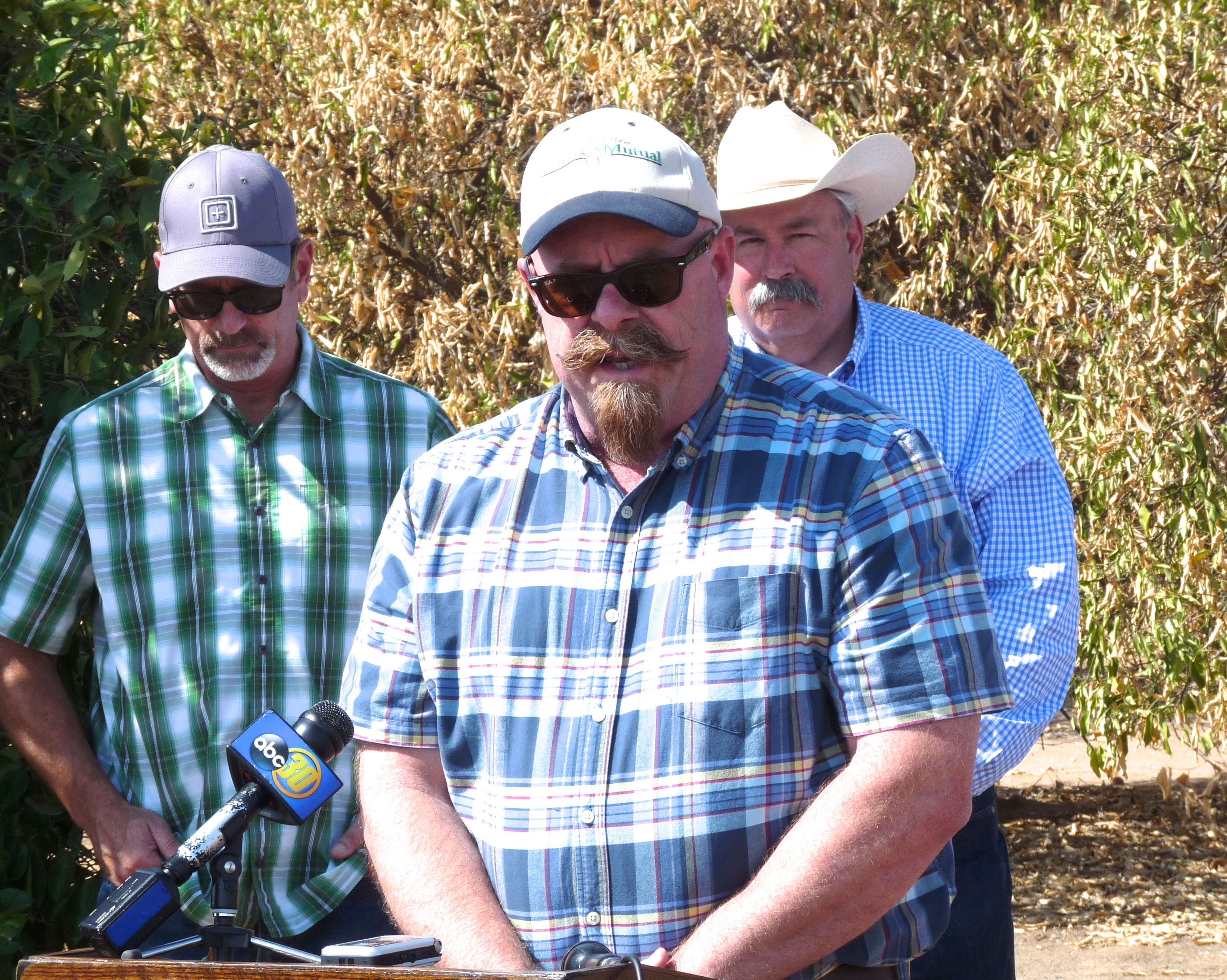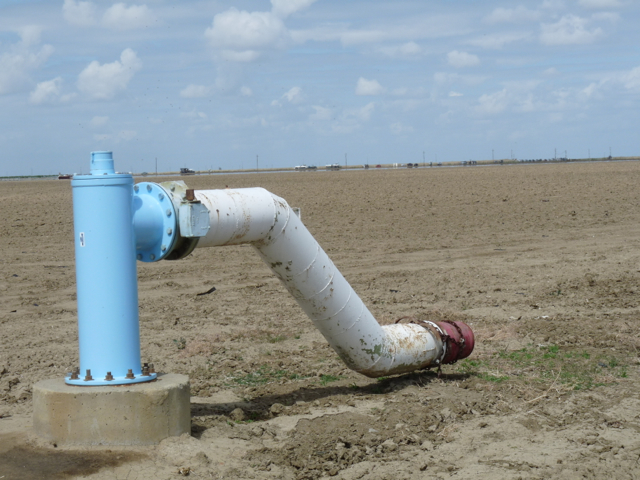Harlan Ranch Pushes Citrus Trees Due to No Water
Califonia Citrus Mutual Holds Press Conference at Harlan Ranch to Show Catastrophe
Kevin Severns, a citrus grower and manager of Orange Cove – Sanger Citrus Association and chairman of California Citrus Mutual, spoke to the crowd gathered at third-generation, family-owned Harlan Ranch, Clovis, CA, TODAY, “This is what a zero allocation looks like, folks, this is what zero allocation looks like.”
“Harlan Ranch and Orange Cove-Sanger Citrus have a long history together. Next year we will receive our lowest-ever deliveries from Harlan Ranch simply because of the number of trees are being pushed. Why are they being pushed? No water.
“This is an inexcusable situation and something we are desperate to do something about. Thankfully, this doesn’t have to be the end of the story. We can do something about this, and that’s what this is all about–to bring attention to both the plight and what can be done about it,” said Severns.
“The packing house that I manage is about 25 miles, as the crow flies, from where I’m standing, and the fruit from this ranch is delivered there along with fruit from the other growers who also own the packing house. It’s a cooperative of family farmers. We employ about 100 people directly in our packing house, and another 200 to 250 in the crews that pick, harvest and prune,” Severns said.



















